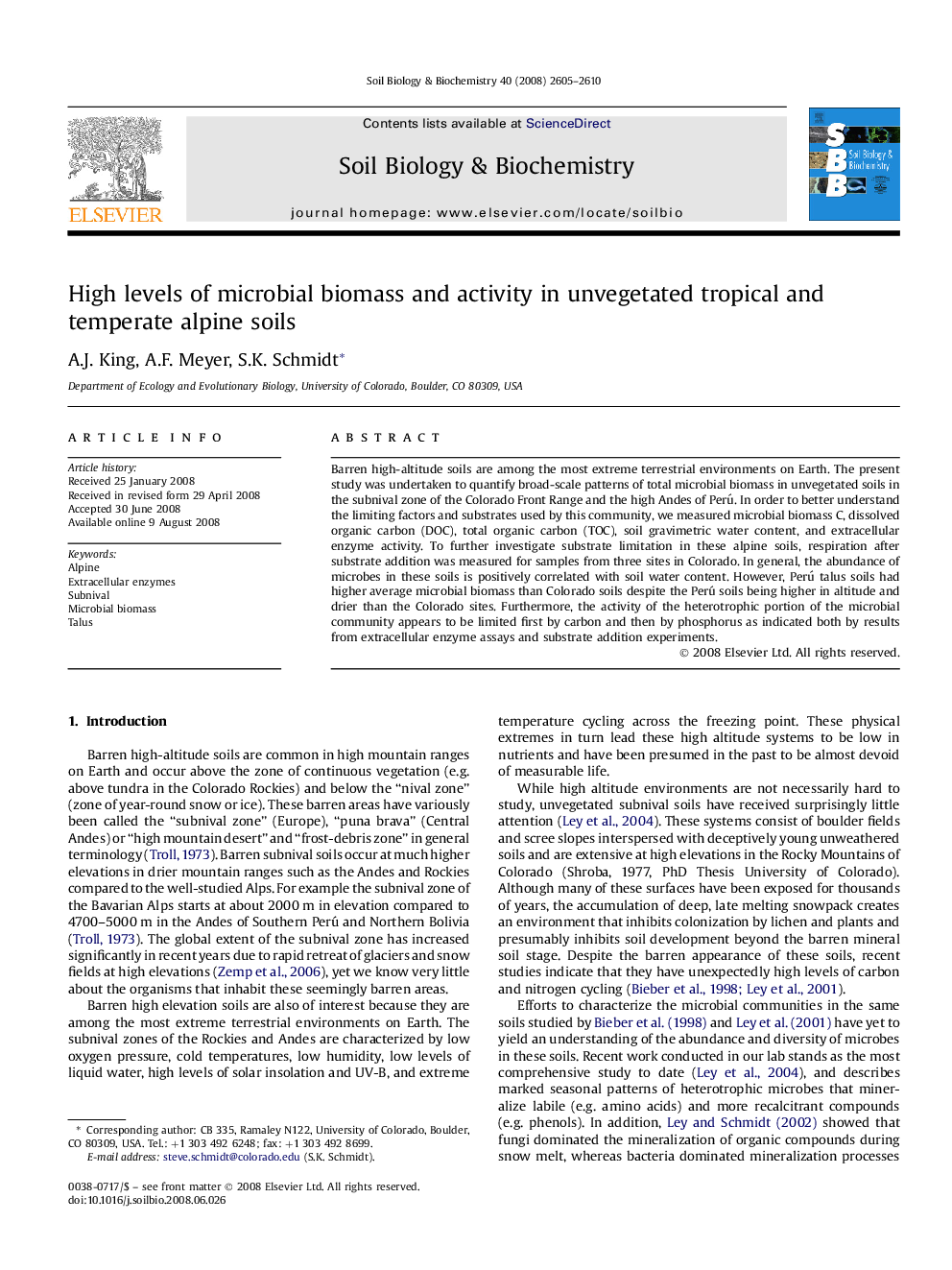| Article ID | Journal | Published Year | Pages | File Type |
|---|---|---|---|---|
| 2025662 | Soil Biology and Biochemistry | 2008 | 6 Pages |
Barren high-altitude soils are among the most extreme terrestrial environments on Earth. The present study was undertaken to quantify broad-scale patterns of total microbial biomass in unvegetated soils in the subnival zone of the Colorado Front Range and the high Andes of Perú. In order to better understand the limiting factors and substrates used by this community, we measured microbial biomass C, dissolved organic carbon (DOC), total organic carbon (TOC), soil gravimetric water content, and extracellular enzyme activity. To further investigate substrate limitation in these alpine soils, respiration after substrate addition was measured for samples from three sites in Colorado. In general, the abundance of microbes in these soils is positively correlated with soil water content. However, Perú talus soils had higher average microbial biomass than Colorado soils despite the Perú soils being higher in altitude and drier than the Colorado sites. Furthermore, the activity of the heterotrophic portion of the microbial community appears to be limited first by carbon and then by phosphorus as indicated both by results from extracellular enzyme assays and substrate addition experiments.
